Select firm vegetables like bell peppers, zucchini, eggplant, and onions for grilling. Mix shapes and sizes, complementing your BBQ sauce's taste profile. Craft a balanced homemade BBQ sauce with tomato paste, sugar, spices, and vinegar. Marinade veggies in oil, vinegar, spices, sweetener, and herbs for deep flavor. Grill veggies at 400-500°F (200-260°C) for a charred, juicy texture. Drizzle with homemade sauce, pair with sides like coleslaw or corn on the cob. Store marinated vegetables in airtight containers up to 3 days. Reheat gently at 350°F (175°C) for 15-20 minutes.
Unleash the taste of summer with flavor-packed grilled vegetables drizzled in a special homemade BBQ sauce. This guide takes you on a journey from choosing the perfect produce to mastering the art of marination and grilling. Learn to create a balanced BBQ sauce that complements your veggies, explore effective marinating techniques, and discover ideal cooking temperatures for a charred finish. Plus, find pairing suggestions, presentation ideas, and tips for storing and reheating your delicious homemade BBQ recipe.
- Choosing the Right Vegetables for Your Grill
- Creating a Balanced and Flavorful BBQ Sauce
- Marinating Techniques for Maximum Taste
- Selecting the Ideal Cooking Temperature
- Grilling Tips for a Perfectly Charred Finish
- Pairing Suggestions with Your Homemade BBQ Recipe
- Presentation Ideas to Impress Your Guests
- Storing and Reheating Your Marinated Vegetables
Choosing the Right Vegetables for Your Grill
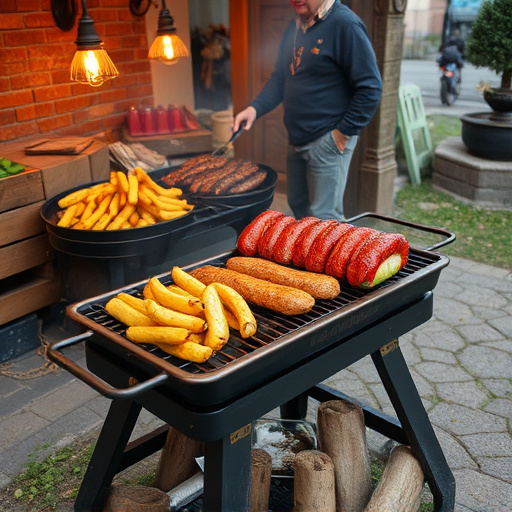
When it comes to grilling vegetables, the key is to select those that will hold up well to high heat and offer a delightful taste combination in your homemade BBQ recipe. Opt for firm vegetables like bell peppers, zucchini, eggplant, and onions. These ingredients not only withstand direct grill heat but also add vibrant colors and textures to your dish.
Consider using a variety of shapes and sizes to create an appealing presentation. For example, cut larger vegetables into bite-sized pieces or halved chunks, while slicing smaller ones like mushrooms and cherry tomatoes. This mix ensures even cooking and adds visual interest to your plate. Remember, the goal is to enhance the natural flavors with your special BBQ sauce, so choose veggies that complement and showcase its unique taste profile.
Creating a Balanced and Flavorful BBQ Sauce
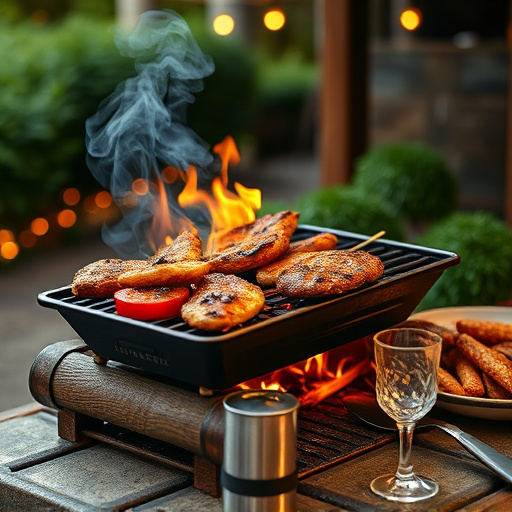
Creating a balanced and flavorful BBQ sauce is an art that combines sweet, smoky, tangy, and savory notes. For a homemade BBQ recipe, start with a base of tomato paste or pureed tomatoes, which provide a rich red color and a natural sweetness. Next, incorporate brown sugar or maple syrup for added sweetness, allowing the caramelization to enhance the flavor profile. Smoked paprika, garlic powder, and onion powder lend smoky and savory notes, while mustard adds tanginess. Adjust the seasoning according to your taste preferences, adding a pinch of salt and pepper.
For an extra depth of flavor, consider adding a splash of vinegar or lemon juice to balance the sweetness, along with a touch of chili powder or cayenne for heat (if desired). Simmer the sauce until it thickens slightly, allowing all the flavors to meld together. This versatile homemade BBQ recipe can be used on a variety of grilled vegetables, ensuring your outdoor meals are anything but ordinary.
Marinating Techniques for Maximum Taste
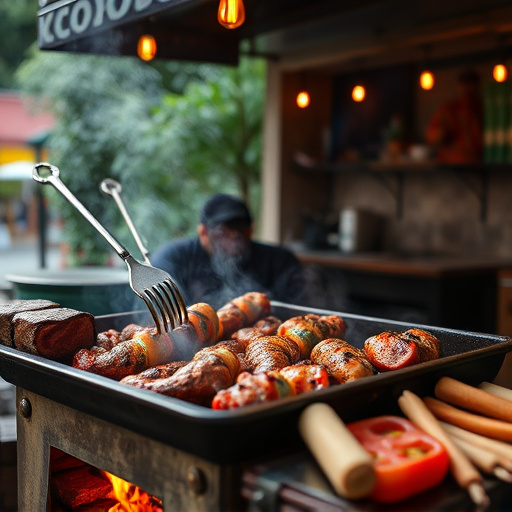
Marinades are a game-changer when it comes to grilled vegetables, infusing them with rich flavors that enhance every bite. For maximum taste, consider using a homemade BBQ recipe as your base. Start by combining oil, vinegar, and a blend of spices like paprika, garlic powder, salt, and pepper. Add a touch of sweetness with brown sugar or honey, along with any favorite herbs—rosemary, thyme, or oregano work beautifully.
Whisk everything together until smooth, then toss your vegetables in the marinade. Let them soak for at least 30 minutes, but ideally a few hours or even overnight in the fridge. This allows the flavors to penetrate deeply, creating a mouthwatering contrast when grilled. The process is simple yet transformative, ensuring your veggies are not just cooked but truly delicious.
Selecting the Ideal Cooking Temperature
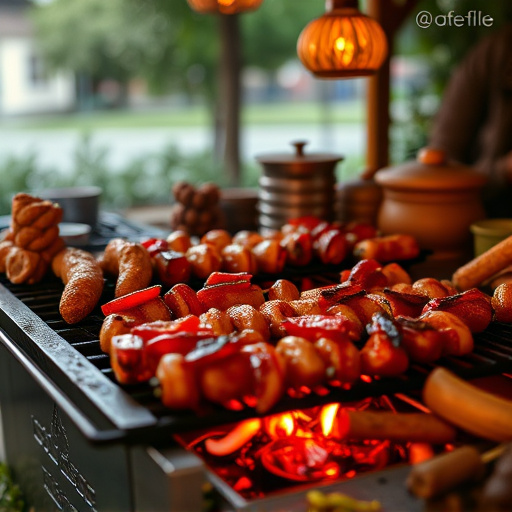
When grilling vegetables, achieving the perfect crisp-outside, tender-inside texture requires careful consideration of heat. For a flavorful homemade BBQ recipe, aim for a medium-high to high heat range, typically between 400–500°F (200–260°C). This temperature ensures that your veggies sear nicely, developing a delightful charred edge while ensuring they remain juicy and tender.
Lower temperatures might result in limp, overcooked vegetables, while excessively high heat can burn the exterior before the inside is cooked through. Stick to this ideal range to maximize the natural sweetness of your chosen produce and enhance it with the smoky, tangy notes from a homemade BBQ sauce.
Grilling Tips for a Perfectly Charred Finish
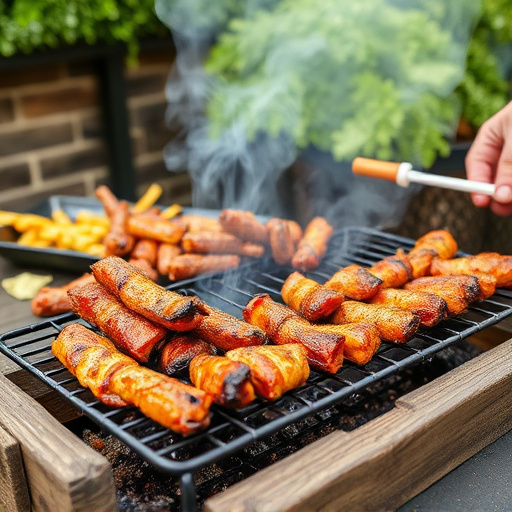
Achieving a perfectly grilled vegetable masterpiece requires a few simple tips and tricks. First, prep your vegetables by slicing them uniformly to ensure even cooking. Consider sizes around 1-2 inches thick for most veggies; thinner slices will burn faster while thicker ones may not cook fully. Next, use a high heat source like the grill’s direct flame or a hot cast iron skillet to sear and char the exterior, locking in that delicious flavor.
Marinating your vegetables in a homemade BBQ recipe before grilling adds another layer of flavor. A simple sauce made with ketchup, vinegar, brown sugar, garlic, and spices can be whipped up in minutes for an irresistible glaze. Brush on the sauce during the last few minutes of cooking to get a glistening finish and don’t forget to flip occasionally for even browning.
Pairing Suggestions with Your Homemade BBQ Recipe
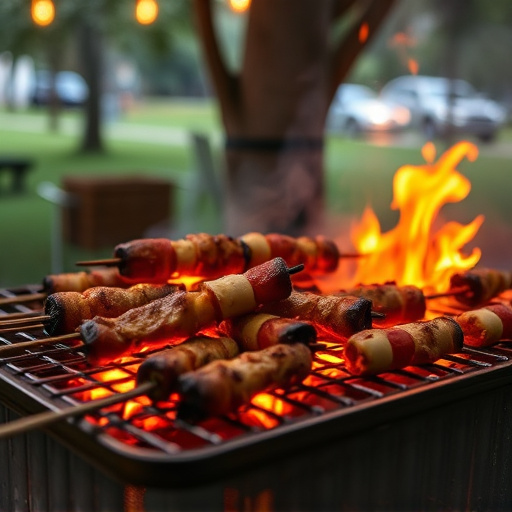
After crafting your homemade BBQ sauce, it’s time to explore delicious pairing suggestions for an unforgettable flavor explosion. Vegetables grilled to perfection are a versatile canvas upon which your BBQ sauce can shine. Consider loading up your favorite veggies like bell peppers, zucchini, eggplant, and mushrooms with the marinated sauce before hitting the grill. This approach ensures each bite bursts with smoky, tangy flavors from your homemade recipe.
To elevate the dish further, think about combining these grilled veggie skewers with various sides that complement the BBQ profile. Crispy coleslaw, creamy corn on the cob, or even a simple sprinkle of fresh herbs and crumbled cheese can add texture and depth to your meal. Experimenting with these pairings will help you unlock the full potential of your homemade BBQ recipe.
Presentation Ideas to Impress Your Guests
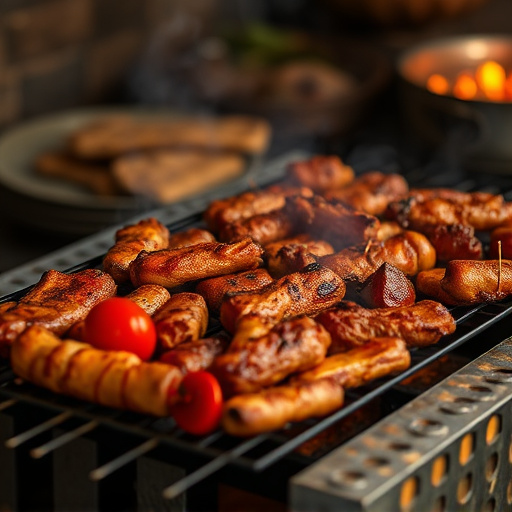
Elevate your grilling game and impress your guests with a visually appealing dish – grilled vegetables drizzled in a homemade BBQ sauce. To create a memorable dining experience, consider arranging the vegetables on a large platter, alternating between different colors and textures like cherry tomatoes, bell peppers, zucchini slices, and eggplant wedges. This not only makes for an esthetically pleasing plate but also offers a diverse range of flavors.
For an added touch, prepare your homemade BBQ sauce with ingredients like ketchup, vinegar, brown sugar, garlic, and spices to enhance the overall taste profile. Serve this mouthwatering creation alongside grilled meats or as a vegetarian side dish. The aroma and tanginess of the BBQ sauce will captivate your guests, ensuring they ask for the recipe – a perfect way to showcase your culinary skills using a simple yet effective homemade BBQ recipe.
Storing and Reheating Your Marinated Vegetables
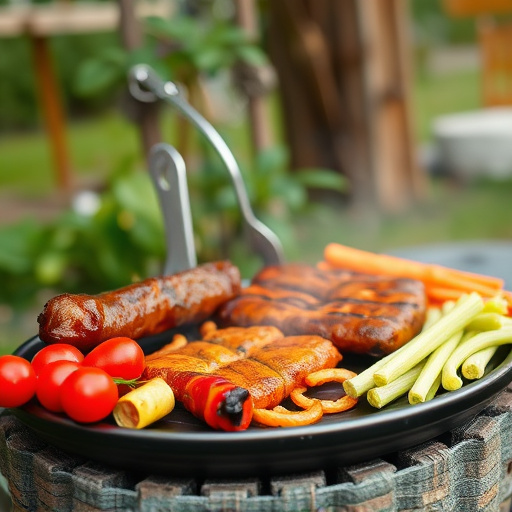
After marinating your vegetables, it’s best to store them in the refrigerator until ready to grill. This helps to keep them fresh and ensures the flavors meld together perfectly. In an airtight container, they can last up to 3 days. If you’re planning to reheat them later, consider placing them on a baking sheet and warming them in the oven at 350°F (175°C) for about 15-20 minutes, or until heated through.
For best results with your homemade BBQ recipe, avoid overcooking the vegetables upon reheating. This can lead to a loss of their tender texture and vibrant colors. Instead, aim to warm them gently, allowing the delicious BBQ sauce to remain sticky and luscious on each bite-sized morsel.
